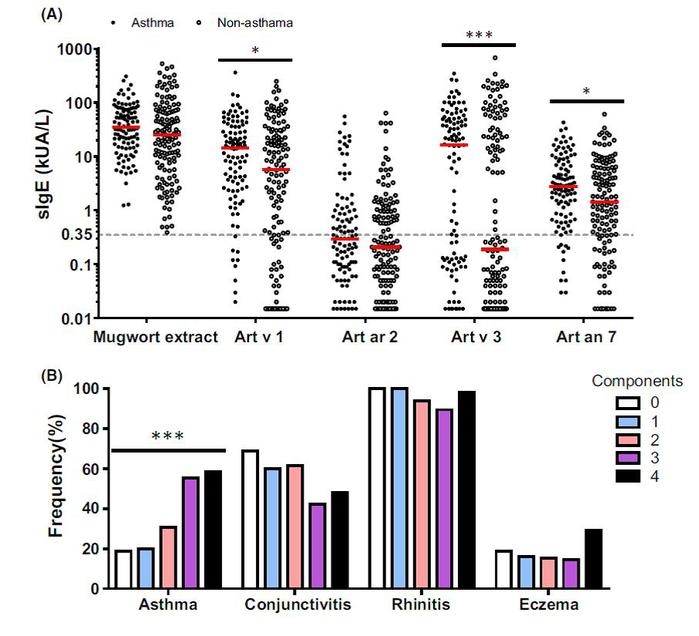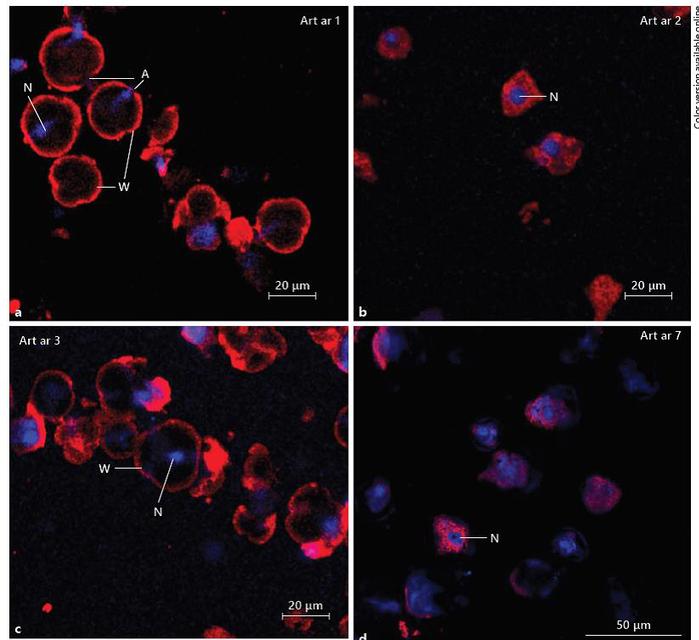One publication is entitled: Artemisia pollen allergy in China: Component-resolved diagnosis reveals allergic asthma patients have significant multiple allergen sensitization, Allergy, 2019, 74:284-293. https://doi.org/10.1111/all.13597.
Artemisia pollen allergy is a major cause of asthma in Northern China. Associations between IgE responses to Artemisia allergen components and clinical phenotypes have been evaluated. The frequency of sensitization and the IgE levels of the four components in Artemisia allergic patients from Southwestern China were significantly lower than in those from the North. Art v 1 and Art an 7 were the most frequently recognized allergens, followed by Art v 3 and Art ar 2. Patients from Northern China were more likely to have allergic asthma (50%) than patients from Southwestern China (3%), and being sensitized to more than two allergens increased the risk of allergic asthma, in which co‐sensitization to three major allergens Art v 1, Art v 3, and Art an 7 is prominent.

Another publication “Localization of four allergens in Artemisia pollen by immunofluorescent antibodies” is recently online in International Archives of Allergy and Immunology, https://www.karger.com/Article/Pdf/497321。.
Where are the allergens located in the pollen that will be released very quickly after contacting human body? Gao’ s work answer this question. The Art v 1 and Art v 3 homologs were mainly located on the pollen walls, and the Art v 7 homologous protein was localized intracellularly around nuclei. The location of the Art v 2 homologous protein varied across species, being intracellular around nuclei for A. annua and A. argyi, and in both the pollen wall and around nuclei for A. capilaris and A. sieversiana.

ion (red signal ) of four main allergens on the Artemisia argyi pollen grain